List Of 18 Different Types & Branches of Entomology
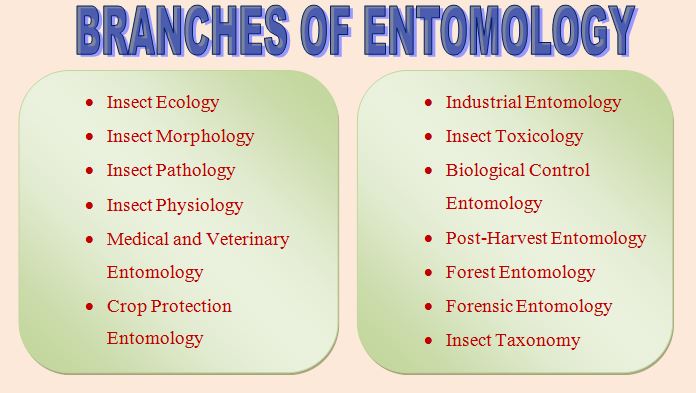
List of 18 Branches of Entomology
Entomology is the branch of zoology dealing with the scientific study of insects. The Greek word “entomon” which means “notched”, refers to the segmented body plan of the insect. Zoological categories of genetics, taxonomy, morphology, physiology, behavior, and ecology are included in this field. A list of various Branches of entomology and related types and fields of science are listed below.
- Insect Ecology
- Insect Morphology
- Insect Pathology
- Insect Physiology
- Insect Toxicology
- Insect Taxonomy
- Industrial Entomology
- Medical and Veterinary Entomology
- Biological Control Entomology
- Post-Harvest Entomology
- Forest Entomology
- Forensic Entomology
- Crop Protection Entomology
Scroll down to read a brief review on branches of entomology with definition, meaning, and scope.
1. Insect Ecology
The study of the relationships between insects and their environment. Here the analysis of the ecosystem for the existence of insects is done and the biogeographical importance of different insects species is discussed. The goal is to protect the insects from removal or extermination.
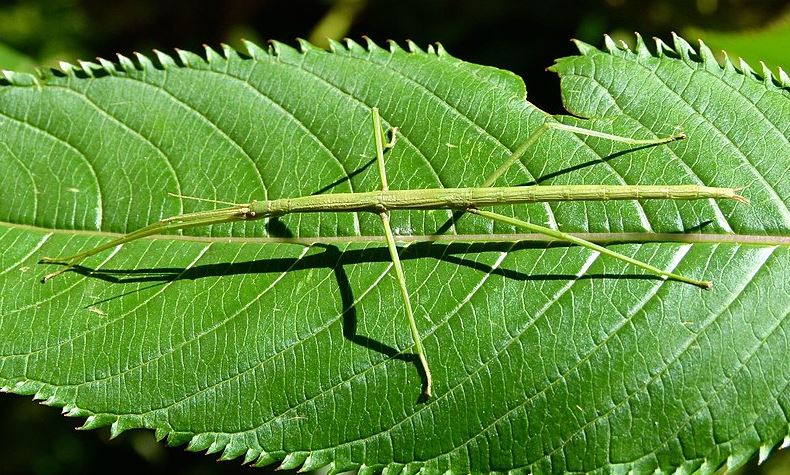
2. Insect Morphology
In this field of entomology, the body parts of insects and their functions are studied. This branch is mainly associated with the external parts of the insect’s body.
3. Insect Pathology
This area of entomology studies diseases and pathogens that can harm and affect the welfare of insects. To save beneficial insects, the scientist uses pathogens or vectors to get rid of certain harmful pest insects.
4. Insect Physiology
It concerns the many systems of bodily functions and behavior of an insect. This mainly involves studying the different behaviors of insects in relation to the ecosystem.
The main systems studied in insect physiology are digestive, excretory, circulatory, immune, muscular, nervous, and reproductive system.
5. Insect Toxicology
This branch deals with the study the insecticides and other chemicals that affect the physiological functions of insects.
6. Insect taxonomy
Insect taxonomy is a naming practice of insects. This is an ongoing process as several unidentified insects still roam planet Earth.
7. Industrial Entomology
This branch of Entomology deals with the rearing of insects for commercial or economic purposes. These include bees, bumblebees, butterflies, silkworms, etc. This branch is concerned with the user insects for benefit of human beings. In the other direction, this also applies to the removal of household pests such as cockroaches, termites, house flies, mosquitos, etc.
8. Medical and Veterinary Entomology
Insects not only harm humans but also animals. In medical and veterinary entomology we study all diseases which are caused by insects in animals and humans. This also covers the role of insects as vectors in spreading diseases such as malaria, dengue, etc.
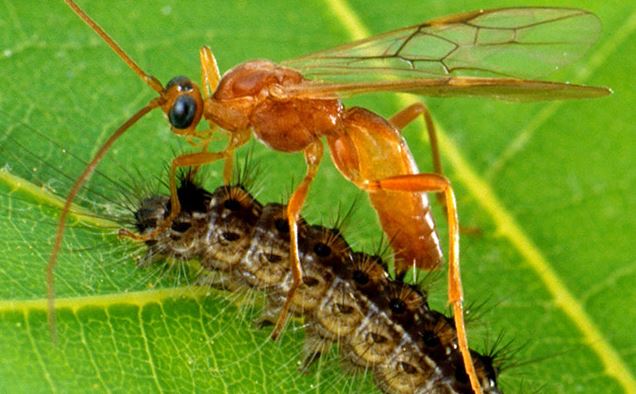
9. Biological Control Entomology
The use of insects against harmful insects. Use of friendly insects to control insect pests known as biological control, for example, wheat aphid eaten by ladybug.
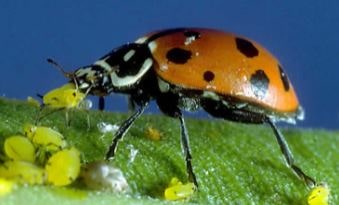
10. Post-harvest Entomology
This branch is concerned with the study and the fight against insects that harm stored foods such as rice, wheat, etc.
Some of these pests include the minor grain moth, grain weevil (Sitophilus granarius, wheat weevil) and rice weevil (Sitophilus oryzae).
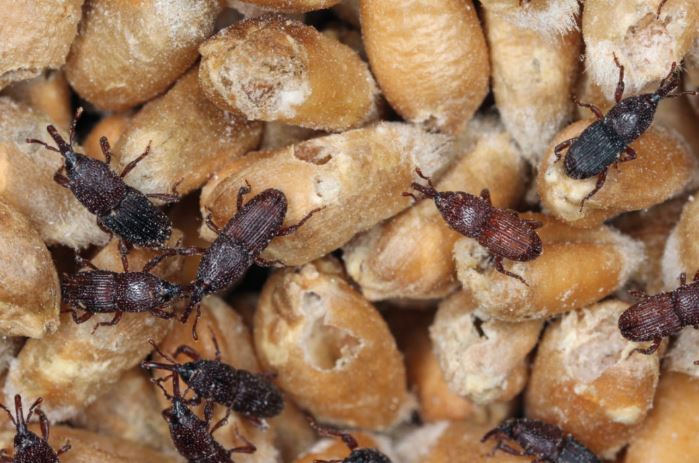
11. Forest Entomology
Study of the effects of insects on forest and forest products and development of a solution to protect forest trees from extreme damage.
Forest insects play an important ecological and economic role. They pollinate plants, break down dead plant and animal tissue, provide food for vertebrates, regulate pests, and shape entire landscapes. Some are considered pests, while others provide usable products.
12. Forensic entomology
The general direction of the study of insects for legal purposes focuses on the use of insects to clarify the place and time of human health. In forensic entomology, we study the application f insects and other arthropods in criminal matters. Here forensic experts try to find out the possible causes of crime with the help of insects.
13. Entomology of crop protection
Studies on how to control insects before they harm field crops are called crop protection entomology also called “agricultural entomology”.
Crops and food products are eaten or spoiled by insects. Agri-entomologists adopt all means of controlling insects to increase the quality and quantity of crops and agricultural products.
14. Insect Systematics
It is the study of the classification of insects and relationships between various insect species. Experts are able to identify new species and uncover hidden relationships and patterns between different species.
15. Insect Genetics
It deals with the study of the genes of insects and their heredity pattern. The study of Insects genetics has uncovered several hidden facts of genetics generally. The fruit fly is a commonly used organism to study heredity laws. It is interesting to know that 60% of the DNA code of fruit flies and humans is identical. This means that most human genes and insect genes are the same and work very similarly.
16. Aquatic entomology
Aquatic entomology is the study of insects that live in water totally or partially during their life cycle. This means that they live their entire lives, or specific stages of their lives, in different types of water bodies.
Many flying insects such as dragonflies, damselflies, caddisflies spend their larval youth in a stream, where they are the main prey of fish. Currently, experts estimate that known aquatic insects make up 3-5% of all insect species on the planet.
17. Apiculture
Apiculture is the scientific rearing of honey bees for the commercial production of honey & other bee products like wax, bee venom, pollen & royal jelly. It is derived from the Latin name for the bee Apis mellifera, which means “honey collector”. It is also called beekeeping. the place where bees are kept is called an apiary.
18. Acarology
It is a scientific discipline that studies mites and ticks. Here the biology, diversity, and phylogeny as well as the economic impact of mites on agriculture and human health are studied.
Ticks and mites are invertebrates that are less famous parasites of humans and other animals. Although most live in the wild, many parasitic forms transmit diseases to humans and animals and some also damage crops. Most adult ticks and mites have four pairs of legs.
